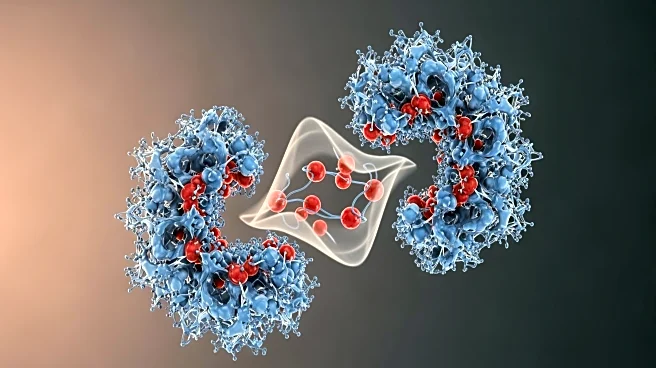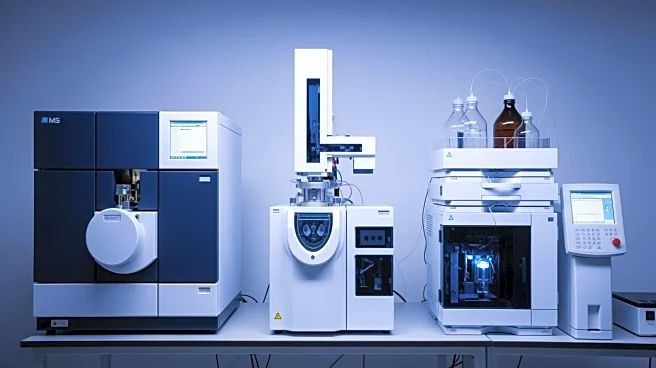What's Happening?
A recent study has provided insights into the dynamics of translocon remodeling during protein synthesis at the endoplasmic reticulum (ER). Researchers constructed HEK293 cell lines expressing Flag-tagged subunits of various complexes, including OST-A
and MPT, and performed ribosome profiling to identify cotranslational interactions. The study revealed that OST-A is recruited during translocation of long segments through the open Sec61 channel, while MPT engages with closed Sec61 channels. This research highlights the distinct roles of OST-A and MPT in cotranslational N-glycosylation and multipass membrane protein biogenesis.
Why It's Important?
Understanding the mechanisms of translocon remodeling is crucial for advancing knowledge in cellular biology and protein synthesis. The findings could have significant implications for the development of therapeutic strategies targeting protein synthesis pathways. By elucidating the roles of OST-A and MPT, the study provides a foundation for further research into the regulation of protein translocation and its impact on cellular function. This knowledge is vital for industries focused on biotechnology and pharmaceuticals, as it may lead to innovations in drug development and disease treatment.
What's Next?
Future research may explore the potential applications of these findings in medical and industrial contexts. Scientists could investigate how manipulating translocon dynamics might influence protein synthesis and cellular health. Additionally, the study opens avenues for exploring the therapeutic targeting of translocon components in diseases where protein synthesis is disrupted. Collaboration between academic institutions and biotech companies could accelerate the translation of these insights into practical applications.
Beyond the Headlines
The study's exploration of translocon dynamics also raises questions about the ethical implications of manipulating cellular processes. As research progresses, it will be important to consider the long-term effects of altering protein synthesis pathways on human health and the environment. The findings may also contribute to discussions on the regulation of biotechnological innovations and their societal impact.













